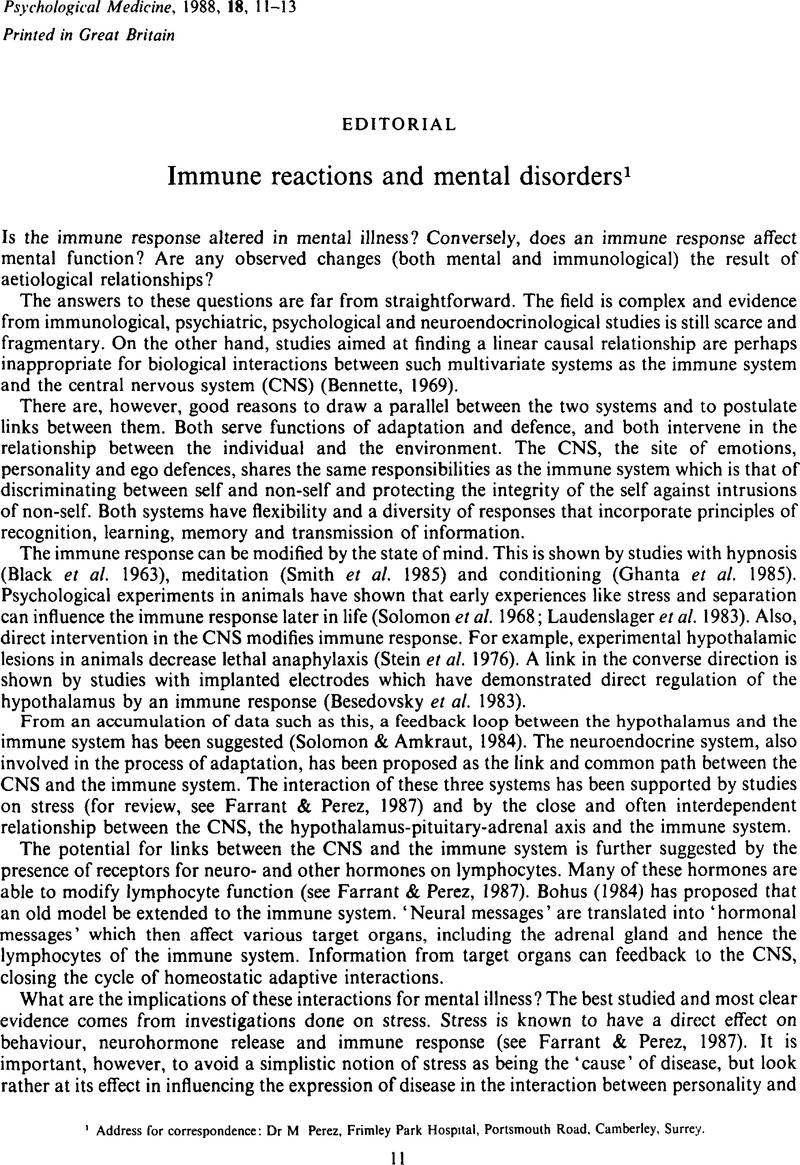Crossref Citations
This article has been cited by the following publications. This list is generated based on data provided by Crossref.
Camara, Enrico G.
and
Danao, Theresa C.
1989.
The Brain and the Immune System.
Psychosomatics,
Vol. 30,
Issue. 2,
p.
140.
Hickie, I.
Silove, D.
Hickie, C.
Wakefield, D.
and
Lloyd, A.
1990.
Is there immune dysfunction in depressive disorders?.
Psychological Medicine,
Vol. 20,
Issue. 4,
p.
755.
Watson, Ian P Burges
Wilson, George V
and
Hornsby, Helen
1992.
“War neurosis” and associated physical conditions: an exploratory statistical analysis.
Irish Journal of Psychological Medicine,
Vol. 9,
Issue. 1,
p.
30.
Halpern, D. S.
and
Reid, J.
1992.
Effect of unexpected demolition announcement on health of residents..
BMJ,
Vol. 304,
Issue. 6836,
p.
1229.
Lyon, Margot L.
1993.
Psychoneuroimmunology: The problem of the situatedness of illness and the conceptualization of healing.
Culture, Medicine and Psychiatry,
Vol. 17,
Issue. 1,
p.
77.
Watson, I Patrick Burges
Muller, H Konrad
Jones, Ivor H
and
Bradley, Adrian J
1993.
Cell‐mediated immunity in combat veterans with post‐traumatic stress disorder.
Medical Journal of Australia,
Vol. 159,
Issue. 8,
p.
513.
Custro, Nicola
Scafidi, V.
Lo Baido, R.
Nastri, L.
Abbate, G.
Cuffaro, M. P.
Gallo, S.
Vienna, G.
and
Notarbartolo, A.
1994.
Subclinical hypothyroidism resulting from autoimmune thyroiditis in female patients with endogenous depression.
Journal of Endocrinological Investigation,
Vol. 17,
Issue. 8,
p.
641.
Koh, Kyung Bong
1998.
Emotion and immunity.
Journal of Psychosomatic Research,
Vol. 45,
Issue. 2,
p.
107.
Koh, Kyung Bong
2018.
Stress and Somatic Symptoms.
p.
43.
Lee, Hyunju
Rhee, Sang Jin
Kim, Jayoun
Lee, Yunna
Kim, Hyeyoung
Lee, Junhee
Lee, Kangeun
Shin, Hyunsuk
Kim, Hyeyoon
Lee, Tae Young
Kim, Minah
Kim, Eun Young
Kim, Se Hyun
Ahn, Yong Min
Kwon, Jun Soo
Han, Dohyun
and
Ha, Kyooseob
2021.
Predictive protein markers for depression severity in mood disorders: A preliminary trans-diagnostic approach study.
Journal of Psychiatric Research,
Vol. 142,
Issue. ,
p.
63.



